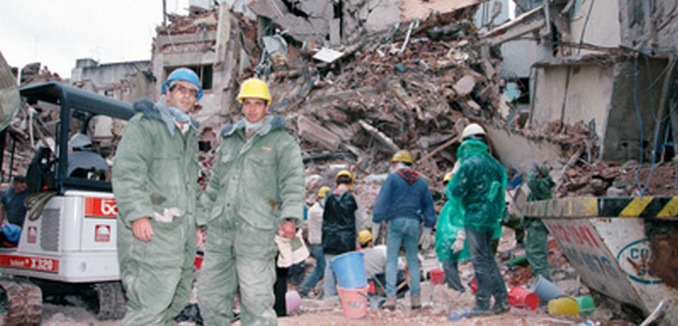In explaining why France remained unconvinced that Iran continues to present a terror threat to Europe, The Wall Street Journal reported last week that a French security official said, “We can imagine an ultranationalist faction carrying out an operation to raise tensions.”
The Journal report explained that given recent Iranian-directed terror attacks and attempts on European soil — most recently a foiled plot to bomb a meeting of an opposition group in Paris — the United States was pushing its European allies, notably the United Kingdom, France and Germany, to distance themselves from the nuclear deal.
The Europeans though, despite the evidence of Iran’s malign activities, believe that the deal will enhance their security.
The security official quoted also demonstrated a reluctance of the Europeans to hold Iran’s regime responsible for the terror attempts.
The official’s choice of the word “imagine” is interesting. Usually, I expect that security agencies “assess.”
But the assertion that a recent terror attack targeting an Iranian opposition group in June was the work of rogue elements in the regime ignores Iran’s record of decades of state-sponsored terror on foreign soil. In fact, an “assessment” of Iran’s record would yield a more sobering conclusion than what the quoted security official imagined.
Perhaps the most notorious example of Iran’s exporting of terror was the bombing of the AMIA Jewish community center in Buenos Aires in 1994. The attack left 85 people dead and hundreds more wounded. Though no one has yet been brought to justice for the terror attack, in 2007, Interpol, the international policing agency, issued red notices — roughly the equivalent of arrest warrants — for six Iranians for their participation.
Though Argentina had requested that red notices be issued for Ali Rafsanjani, Iran’s president at the time of the attack; Ali Akbar Velayati, Iran’s foreign minister; and former Ambassador of Iran in Buenos Aires, Hadi Soleimanpour. Interpol didn’t issue the red notices because they were national leaders and outside of its authority, not because it felt that Argentina’s evidence was insufficient.
Two years before the AMIA terror attack, Iranian agents killed three Kurdish opposition leaders in Berlin Germany. As in the AMIA case, Rafsanjani and Velayati were implicated for having ordered the hit.
In August, there are anniversaries of two other infamous terror attacks in which Iran was involved in foreign countries.
In August 1991, three men entered the Paris residence of Shapour Bakhtiar, the final prime minister of Iran before the Islamic revolution in 1979, and stabbed him and his secretary to death. According to PBS’s Frontline, the French investigation connected the assassins to Ministry of Intelligence and National Security and “would also implicate a range of other Iranian government institutions in the assassination conspiracy.”
This week, terrorism expert Thomas Joscelyn recalled that Al Qaeda received logistical support from Iran in perpetrating the simultaneous attacks against the United States embassies in Kenya and Tanzania on Augusts 8, 1998.
In short, Joscelyn noted that official sources show that “Iran showed al Qaeda how to conduct the attacks” that killed two hundred and twenty-four people and injured thousands more. According to the 9/11 Commission, “[Osama] bin Laden reportedly showed particular interest in learning how to use truck bombs such as the one that killed 241 U.S. Marines in Lebanon in 1983.” He received that knowledge from Iran and Hezbollah who planned and executed simultaneous bombings of the Marines barracks as well as the headquarters for French military personnel.
Hezbollah expert Matthew Levitt noted in a recently-published paper, that a 1987 U.S. intelligence assessment charged that numerous Iranian agencies coordinate its terrorist activities abroad. For example, the assessment noted, “Department 210 of the Foreign Ministry serves as a primary operations center for coordination with Iranian intelligence officers abroad, and is often used to instruct intelligence officers about terrorist operations.”
The arrest of Iranian diplomat Assadollah Assadi, in connection to the attempted Paris terror attack, Levitt wrote, is, “just the most recent alleged example of Iranian state-sponsored terrorism in which Tehran uses visiting government officials or accredited diplomats to plot terrorist attacks.”
It is, perhaps, easy to believe Iran’s terror is not regime-sponsored, but the work of rogue elements. But when the whole record is considered, one should assess that sponsoring terror abroad is the way Iran conducts its affairs.
[Photo: Israel Defense Forces / Flickr ]




